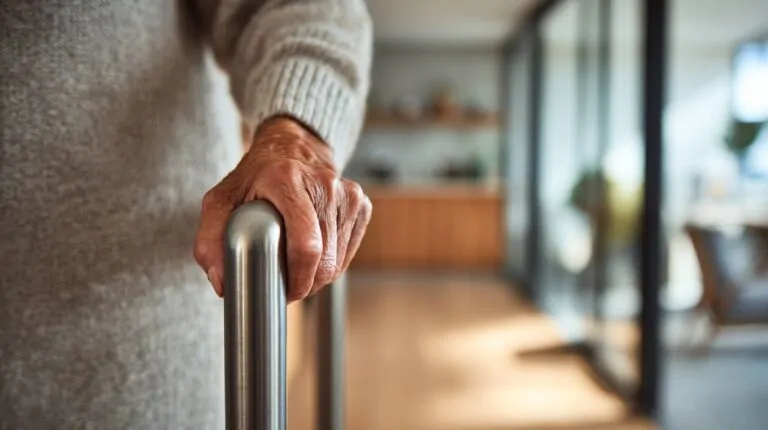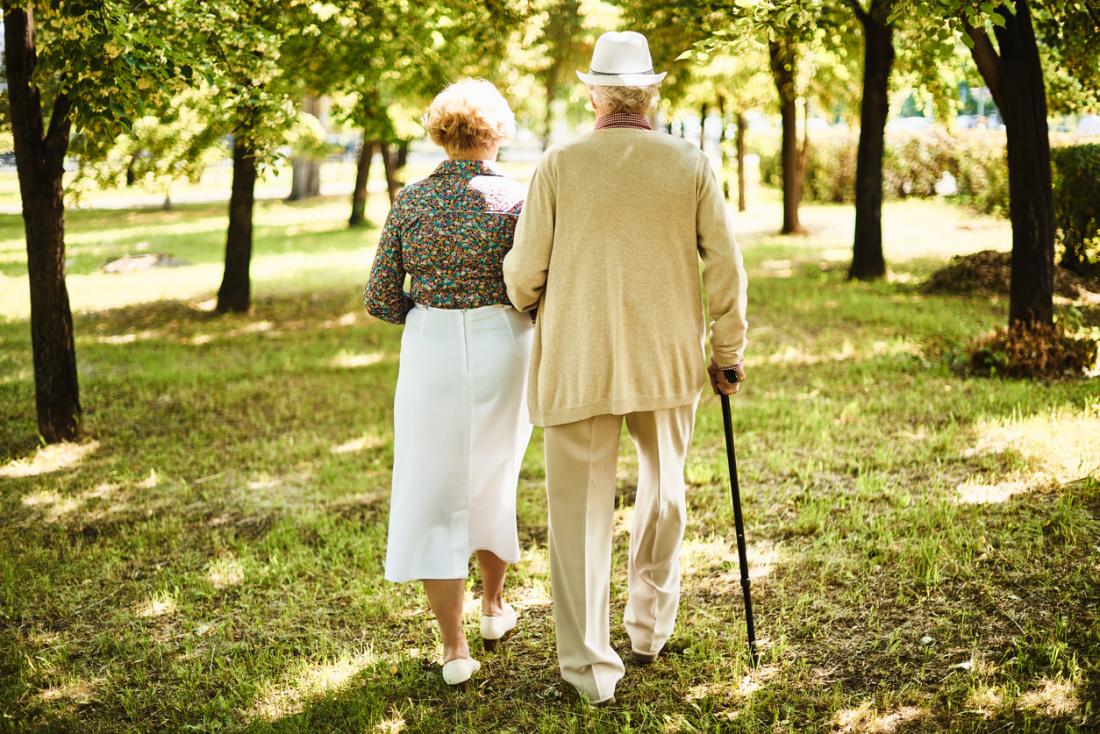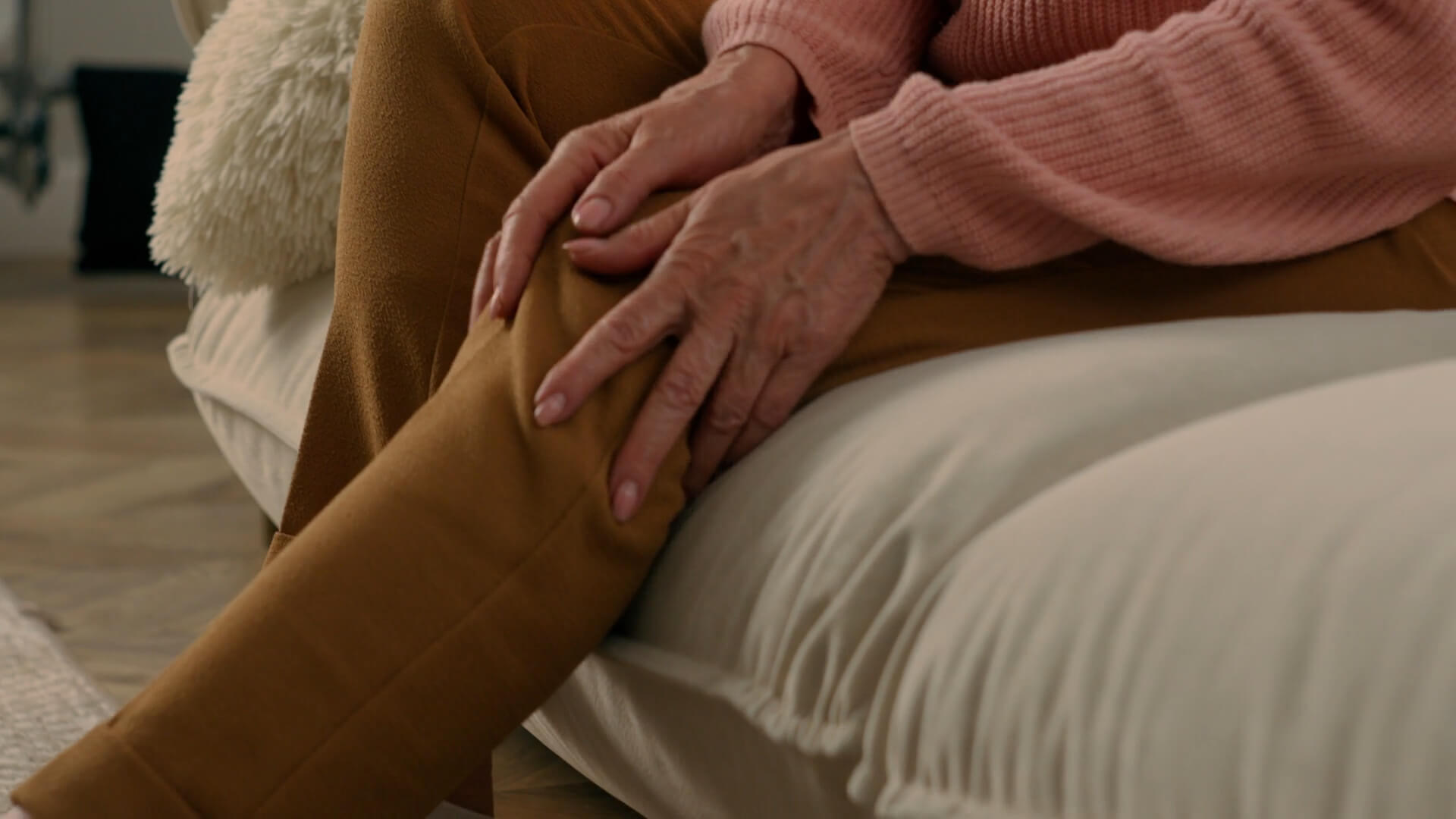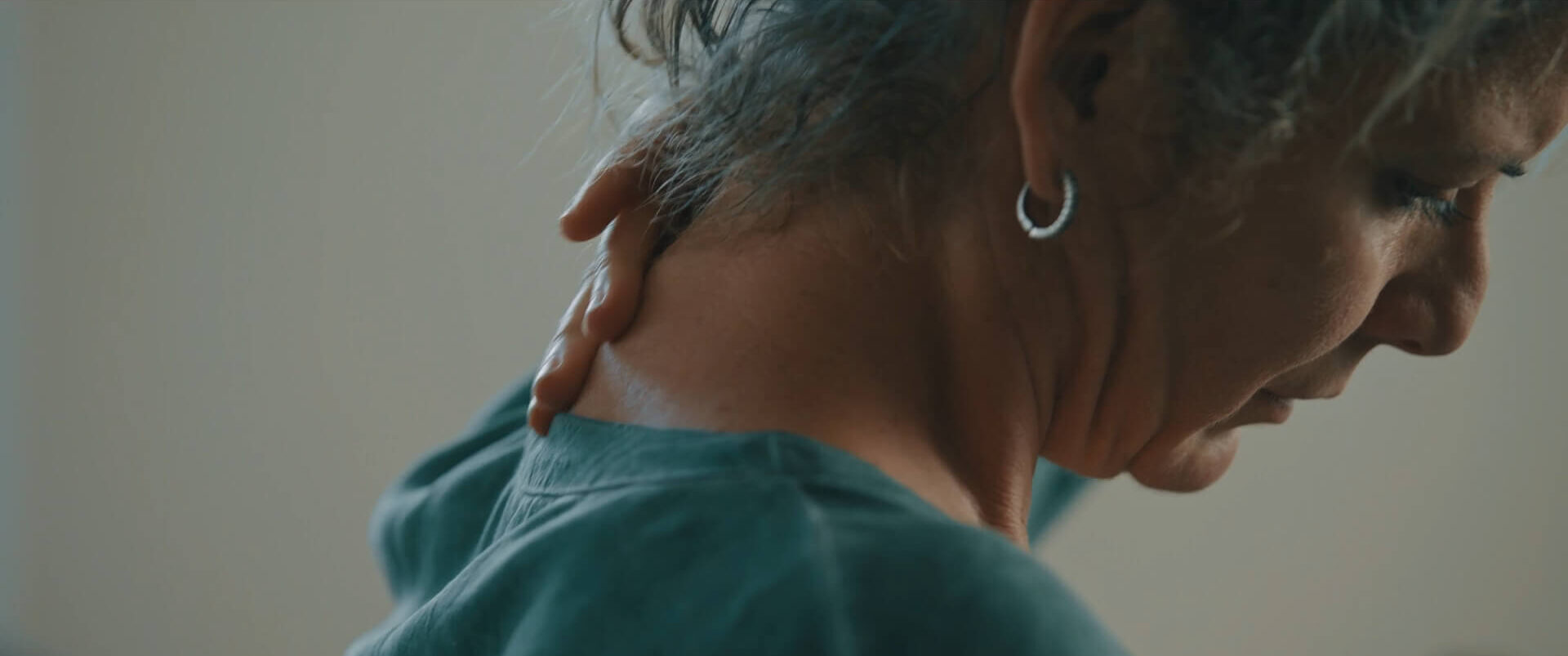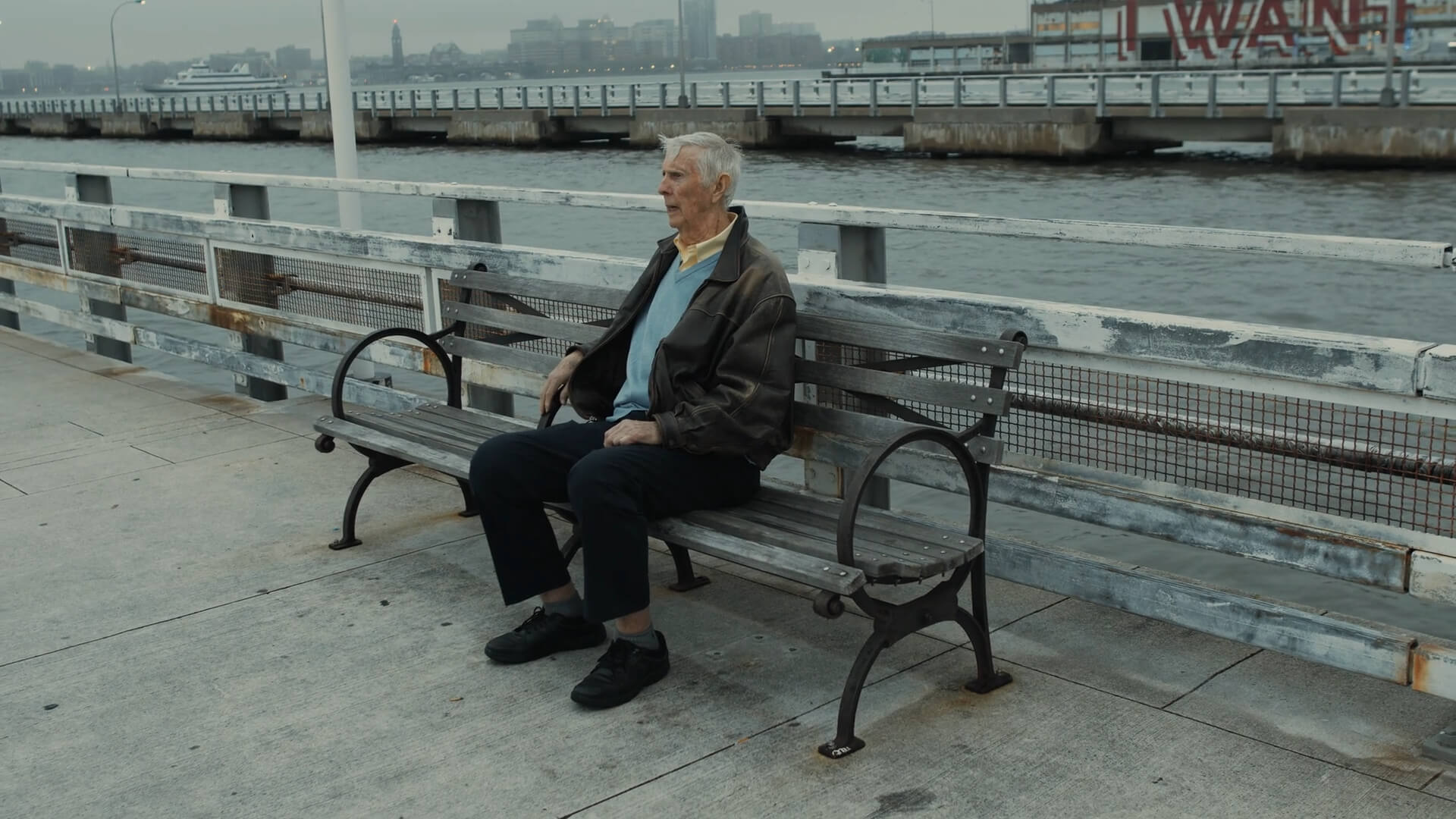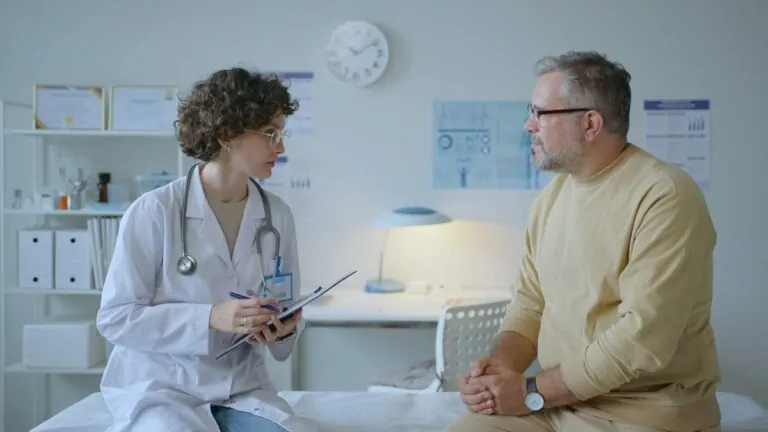As people get older, it’s common to notice changes in posture, like leaning to one side when sitting. It might seem like a small thing, but it could actually point to some underlying issues. Elderly adults often deal with a mix of muscle weakness, joint pain, and even neurological conditions that mess with their balance and strength.
This article will provide more on why older people might start leaning to one side.
Table of Contents
ToggleList of Most Common Reasons
1. Neurological Conditions
| Parkinson’s Disease | 500,000 – 1 million people(US) | Pisa syndrome, muscle rigidity leading to leaning |
| Stroke | 15 million people globally | Muscle weakness on one side, leading to imbalance |
| Diabetic Neuropathy | 206 million people worldwide | Nerve damage affecting balance and posture |
Some of the most significant contributors include Parkinson’s disease, strokes, and Alzheimer’s disease. These conditions affect motor control, muscle coordination, and balance, leading to postural imbalances.
For instance, Parkinson’s disease affects between 500,000 and 1 million people in the U.S., with most individuals developing symptoms around the age of 70. A common symptom in Parkinson’s is the Pisa syndrome, where individuals experience a lateral bend of more than 10-15 degrees, causing them to lean to one side when walking or sitting.
Strokes also play a major role in postural changes, with over 60% of stroke survivors experiencing muscle weakness on one side, which frequently results in a lean due to imbalanced muscle strength. Strokes contribute to long-term neurological damage, affecting both coordination and muscle tone.
Furthermore, diabetic neuropathy—a rapidly growing neurological condition with 206 million cases worldwide—leads to nerve damage, affecting the body’s ability to maintain proper posture.
Key Stats
- 3.4 billion people globally suffer from neurological disorders, which are the leading cause of disability worldwide.
- The number of people living with Parkinson’s has more than doubled from 2.5 million in 1990 to 6.1 million in 2016.
- Neurological disorders account for over 80% of disability and deaths in low- to middle-income countries, where access to treatment is limited.
Additional Factors
- Neurological conditions not only affect the brain but also lead to muscle stiffness, coordination issues, and balance problems, making it harder for individuals to sit or walk without leaning.
- Pisa syndrome, a common symptom of Parkinson’s, results in a severe lean to one side, often requiring physical therapy and medication adjustments to manage.
Suggested Solutions
- Physical Therapy: Strengthening exercises focusing on core muscles can help offset the imbalance caused by neurological conditions.
- Medication Adjustments: In cases like Parkinson’s, adjusting medications such as levodopa may help reduce the severity of leaning.
- Assistive Devices: Using walkers with forearm support or mobility aids can help maintain proper posture and prevent further leaning.
2. Muscle and Joint Weakness
| Cause of Muscle Weakness | Prevalence in Elderly | Impact on Posture |
|---|---|---|
| Sarcopenia | 64.2% of individuals over 65 | Leads to reduced core strength and leaning |
| Muscle Fiber Decline | 30% – 50% strength loss by age 70 | Impairs ability to maintain upright posture |
As we age, muscle weakness becomes a significant factor leading to postural issues like leaning to one side. This weakness often results from sarcopenia, the natural loss of muscle mass that starts around age 30 and accelerates after 60.
By the time individuals reach their 70s, muscle strength can decrease by 30% to 50%, which has a direct impact on balance and posture. Sarcopenia leads to reduced muscle coordination, making it harder for elderly adults to maintain an upright position without leaning.
In the U.S., 64.2% of individuals aged 65 and older exhibit signs of muscle weakness, as measured by handgrip strength, a standard indicator of overall muscle health. This weakness is more common in women, with 54.5% of women experiencing muscle loss compared to 50.4% of men.
The decline in muscle mass affects not just strength but also flexibility and endurance, forcing individuals to lean to one side when sitting or walking to compensate for their weaker muscles.
Key Stats
- By age 70, muscle strength can drop by up to 50%, increasing the likelihood of postural imbalance.
- 64.2% of individuals over 65 in the U.S. show signs of muscle weakness, significantly affecting their ability to maintain proper posture.
- Muscle loss begins as early as age 30 and accelerates past 60, with both type I and type II muscle fibers experiencing a decline.
Effects of Muscle Weakness
- Sarcopenia and dynapenia lead to a reduction in overall muscle mass and strength, causing postural imbalances.
- Reduced muscle coordination forces elderly individuals to lean to one side for stability.
- The weakening of core muscles makes it challenging to stay upright, resulting in frequent leaning while sitting.
Suggested Solutions
- Strength Training: Engaging in regular strength exercises can help slow the progression of muscle loss, improving balance and reducing the tendency to lean.
- Nutritional Support: Increasing protein intake can help maintain muscle mass and combat sarcopenia.
- Physical Therapy: Targeted exercises aimed at rebuilding core strength and flexibility can help individuals correct their posture and maintain better balance.
3. Skeletal Disorders
| Condition | Prevalence in Elderly | Impact on Posture |
|---|---|---|
| Osteoporosis | 10 million Americans | Leads to compression fractures, leaning |
| Scoliosis | 6% of adults over 60 | Causes abnormal spinal curvature, leaning |
Skeletal disorders, particularly scoliosis and osteoporosis, are significant contributors to leaning in elderly individuals. Both conditions affect the spine and overall bone structure, leading to poor posture and a tendency to lean to one side.
Osteoporosis is a common condition, affecting over 10 million Americans, with 80% of cases occurring in women. It weakens bones, making them more fragile and prone to fractures, especially in the spine.
Spinal compression fractures are common in osteoporosis patients and can cause a lean or tilt as the spine becomes more compressed and uneven over time. These fractures often go unnoticed until they significantly affect posture.
On the other hand, scoliosis, which affects 6% of adults over the age of 60, leads to abnormal curvature of the spine. As scoliosis progresses, the uneven distribution of weight on the vertebrae can cause the spine to curve even further, resulting in a noticeable lean.
Individuals with scoliosis have a higher risk of developing osteoporosis, which exacerbates the risk of fractures and postural deformities.
Key Stats
- 10 million Americans have osteoporosis, and 80% of them are women.
- 6% of adults over 60 suffer from scoliosis.
- Compression fractures caused by osteoporosis lead to an increased likelihood of leaning due to spinal imbalances.
Effects of Skeletal Disorders
- Osteoporosis weakens bones, especially in the spine, causing compression fractures that worsen posture.
- Scoliosis leads to an abnormal curvature in the spine, causing individuals to lean as the spine becomes misaligned.
- Both conditions are often intertwined, with osteoporosis increasing the severity of scoliosis-related issues.
Suggested Solutions
- Bone Density Monitoring: Regular screenings for osteoporosis can help catch bone weakening before it leads to significant postural issues.
- Calcium and Vitamin D: Adequate intake of these nutrients is crucial for maintaining bone health and preventing further degradation.
- Physical Therapy: Strengthening the muscles around the spine and improving flexibility can help reduce the effects of scoliosis and osteoporosis.
4. Chronic Pain
| Cause of Chronic Pain | Prevalence in Elderly | Impact on Posture |
|---|---|---|
| Chronic Pain | 21% of U.S. adults | Leads to muscle weakness and leaning |
| High-Impact Chronic Pain | 8% of adults | Causes postural changes due to reduced activity |
Chronic pain is a widespread issue among the elderly and can significantly contribute to postural changes, including leaning to one side. It affects over 21% of U.S. adults, with the likelihood increasing as people age.
Chronic pain often develops in areas like the lower back, hips, and knees, which are crucial for maintaining posture. Over time, the pain forces individuals to adjust their posture for relief, resulting in leaning.
High-impact chronic pain (HICP), which interferes with daily activities, affects 8% of adults. These individuals are more likely to avoid physical activity, contributing to muscle weakness and further imbalance, making them prone to leaning while sitting or standing.
Key Stats
- 21% of U.S. adults experience chronic pain, with the incidence rising to 52.4 cases per 1,000 people per year.
- 61.4% of individuals with chronic pain still report it after one year, demonstrating its persistent nature.
- Chronic pain is one of the most significant contributors to reduced mobility, further increasing the risk of postural problems like leaning.
Effects of Chronic Pain
- Chronic pain often leads to the avoidance of movement, causing muscle weakness and reduced flexibility, both of which can contribute to leaning.
- As the elderly shift their weight to alleviate pain, they develop poor postural habits, further exacerbating the problem.
Suggested Solutions
- Pain Management: A multimodal approach using both medications and physical therapy can help reduce pain and improve posture.
- Physical Activity: Encouraging regular movement, even in the presence of pain, can help maintain strength and flexibility, preventing further postural degradation.
- Supportive Devices: For those with severe chronic pain, the use of mobility aids can help reduce strain on painful areas, allowing for a more upright posture.
5. Incorrect Seating
| Seating Issue | Impact on Posture |
|---|---|
| Incorrect Seat Width | Causes leaning for stability |
| Poor Armrest Positioning | Leads to lateral flexion |
| Inadequate Foot Support | Reduces posture stability |
When a chair is poorly suited to an individual’s body, it can lead to uncomfortable, unsupported sitting positions, resulting in leaning. For example, if a chair is too wide, an elderly person may lean to one side to feel more stable.
Similarly, seats that are too deep can cause individuals to slouch or lean forward, putting strain on their back and hips. The impact of poor seating on posture can be profound, especially for those who already struggle with muscle weakness or joint stiffness.
One study noted that 19% of a person’s body weight is supported by the feet when seated properly. If the feet do not rest flat on the floor or the seat depth doesn’t align with the individual’s thigh length, it leads to posture imbalances that often cause leaning.
Additionally, low or poorly positioned armrests can exacerbate this issue, as elderly individuals may shift their weight to make contact with the armrest, leading to a lateral lean.
Key Stats
- 19% of body weight is supported by the feet when seated correctly.
- Poorly fitted seating can cause pelvic obliquity, leading to spinal curvature and increased leaning.
Effects of Incorrect Seating
- Pelvic Obliquity: When one hip is higher than the other due to improper seating, the spine compensates by curving to one side, leading to a habitual lean.
- Scoliosis Development: Prolonged poor seating can lead to spinal issues, including scoliosis, particularly in the elderly with already weakened musculoskeletal structures.
Suggested Solutions
- Seating Assessments: It is crucial to ensure chairs fit the individual’s body properly, including adjustable seat height, depth, and armrest positioning.
- Specialized Chairs: Therapeutic chairs with features like a waterfall backrest or lateral supports help maintain proper posture by distributing weight evenly and supporting the spine.
FAQs
Why do elderly people lean more as they age?
As people age, muscle mass naturally decreases, and bones can become weaker, leading to poor posture and leaning. Age-related conditions like sarcopenia (muscle loss) and joint stiffness make it harder to maintain proper posture. Additionally, older adults may experience slower reaction times, which can cause them to lean for balance.
Can a poor diet cause elderly people to lean?
Yes, a poor diet lacking essential nutrients like calcium and vitamin D can weaken bones, contributing to osteoporosis, which affects posture. A lack of protein may also reduce muscle mass, leading to weaker muscles that struggle to support the body properly. Ensuring a balanced diet can help prevent these issues.
How do mobility aids help with leaning?
Mobility aids like walkers and canes help elderly individuals maintain balance while walking, reducing the tendency to lean. They provide extra stability and allow the user to distribute their weight more evenly, preventing falls and promoting better posture. Specialized equipment like supportive chairs or seating cushions can also help when sitting.
Can poor vision or hearing make elderly adults lean?
Yes, poor vision or hearing can affect how a person perceives their surroundings, leading them to lean when trying to focus on something or interact with others. If an elderly person has trouble seeing or hearing, they may unconsciously lean toward the source of sound or visual cues to compensate for their sensory loss.
Can medication side effects cause elderly adults to lean?
Certain medications, particularly those that affect the nervous system, balance, or muscle function, can cause side effects like dizziness, fatigue, or weakened muscles, which may lead to leaning. It’s important to consult a healthcare professional if new medications are introduced and leaning becomes a noticeable issue.
How does dehydration affect posture in elderly adults?
Dehydration can lead to muscle cramps, weakness, and fatigue, all of which can negatively affect posture. Without adequate hydration, muscles do not function properly, making it harder for elderly individuals to sit or stand upright without leaning.
Can poor footwear cause an elderly person to lean?
Yes, wearing ill-fitting or unsupportive shoes can lead to balance issues, increasing the risk of leaning. Proper footwear with good arch and heel support is crucial for maintaining stability, especially in older adults who may already struggle with weakened muscles or joint pain.
What is the best chair for elderly adults who lean?
Chairs with adjustable backrests, proper lumbar support, and cushioning are best for elderly adults who lean. Look for chairs with features like a waterfall backrest or lateral supports, which help keep the spine in alignment and prevent leaning. Chairs that allow for easy adjustments based on individual needs can significantly improve posture.
Conclusion
Leaning to one side in elderly adults can result from a variety of factors, including neurological conditions, muscle weakness, skeletal disorders, chronic pain, and improper seating. Each of these issues contributes to poor posture, making it difficult for older adults to sit or stand upright without support.
Related Posts:
- Why You Might Need a Letter of Competency (and How…
- How Can You Start Organizing Pre-Death Plan For Your…
- Why Doctors Recommend Chemical Stress Tests for Older Adults
- 11 Common Causes of Low Oxygen Levels in Elderly Adults
- When Should You Be Concerned About Oxygen Levels in…
- Why Feeling Thirsty Isn't the Only Sign You Need More Fluids

